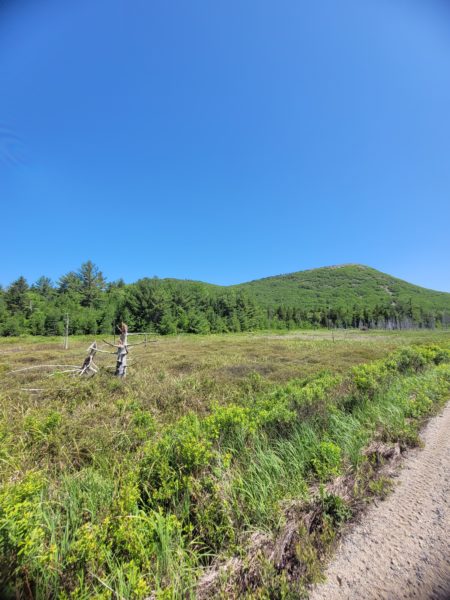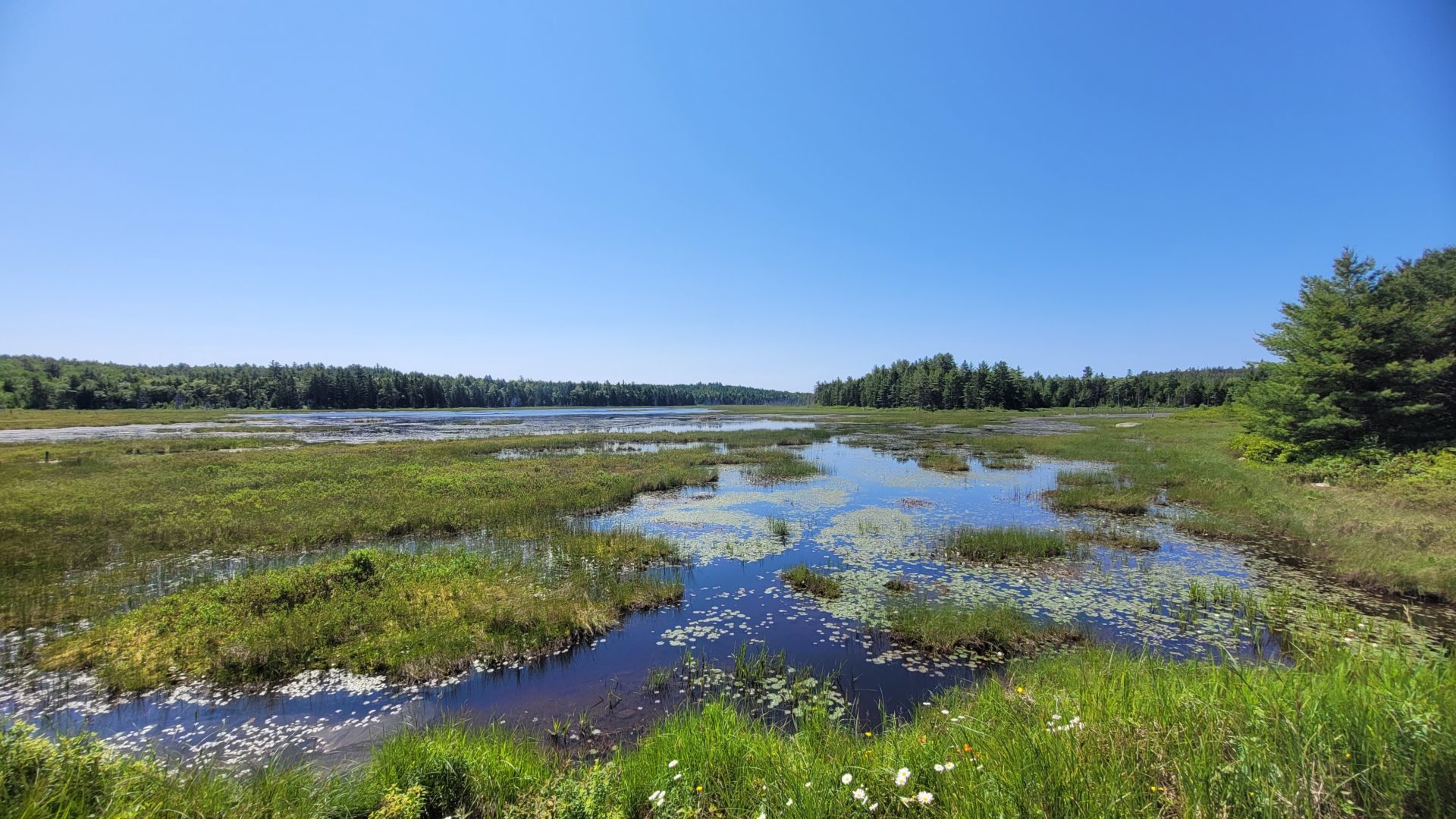Schoodic Bog: A Taste of the Northwoods
Maine is quite the endless enigma.
It has the low population density and large uninhabited areas typical of a western state like Montana and Wyoming. The conifer-hardwood forests, rocky uplands and hemiboreal wildlife are nearly identical to those of the Upper Midwest. Low per capita incomes and a very rural population (the most rural in the country (1)) are similar to regions within the American South. It is the safest state (2), has the oldest population, and is home to a high percentage of French speakers (3). If there’s a pattern here, I sure as hell can’t find it.
But perhaps the most appealing comparison is to one of our most romantic states: Alaska. Much like the Last Frontier, Maine features coastal population centers that slowly fade to a dominating northern wilderness. Both states have landscapes of dramatic mountains, lakes, bogs and endless forest, and are home to more moose (4) and bear (5) than almost anywhere else in the country. And yet very few people will ever look upon Maine’s interior majesty. Most of the popular tourist destinations are on the coast after all, and it takes hours to reach something like that, right?
Well… not exactly. Let’s talk about Schoodic Bog.
Schooling on Schoodic
Today’s history lesson will be mercifully light. In fact, very little is written in reference to Schoodic Bog. So, rather, I’ll take this opportunity to discuss a somewhat confusing and complicated topic: the many Schoodics of Maine.
 For most, the word “Schoodic” brings to mind the Peninsula. A discerning eye may also note a half-dozen other Schoodics from Hancock county to the Canadian border: Schoodic Bog, Schoodic Mountain, Schoodic Beach, Schoodic Brook, Schoodic Lake. The word itself seems to be of uncertain etymology, and is most commonly associated with either the Mi’kmaq “eskwodek” (“the end”) or Passsamaquoddy “scoudiac” (“burnt place”). Yet it seems that there were once two predominant “Schoodics”: the peninsula, and the river. And the story of the latter is too morbidly comical to pass up.
For most, the word “Schoodic” brings to mind the Peninsula. A discerning eye may also note a half-dozen other Schoodics from Hancock county to the Canadian border: Schoodic Bog, Schoodic Mountain, Schoodic Beach, Schoodic Brook, Schoodic Lake. The word itself seems to be of uncertain etymology, and is most commonly associated with either the Mi’kmaq “eskwodek” (“the end”) or Passsamaquoddy “scoudiac” (“burnt place”). Yet it seems that there were once two predominant “Schoodics”: the peninsula, and the river. And the story of the latter is too morbidly comical to pass up.
When French explorer Samuel de Champlain first traveled through the proclaimed province of Acadia in 1604, he came to a river at the modern Maine-Canada border that the Wabanaki called Schoodic. Champlain, however, didn’t much care for traditional place names, and instead titled the waterway and a large island within it “Saint Croix”. What followed was an exceptional show of European ingenuity: they chose to settle on the island assuming the climate to be mild, were promptly frozen in by a frigid Maine winter, ran out of food, were ravaged by scurvy, buried half of the settlers, and then fled back to Nova Scotia in the spring. Such was the fate of Maine’s first European colony. Good stuff.
As to where the other features got their names, the most likely answer is through regional associations: Schoodic Bog is north of the Schoodic Peninsula, etc., etc.
Back in Black(Woods)
Schoodic Bog can be found north of Sullivan in a region rarely visited by the average tourist. Colloquially known as the Blackwoods, it is home to granite mountains, dense forests, sheltered bogs and expansive lakes. A large portion of this land is protected within the state-owned Donnell Park Public Lands, which provides the northern border for the FBC Schoodic Bog preserve. And, once you get out on the region’s trails, you quickly learn that things are a little different here.
The Blackwoods represent the southern end of a forest corridor stretching nearly uninterrupted for one hundred miles, consisting largely of undeveloped second-growth forest. This has allowed much of the state’s unique fauna (moose, bear, porcupine) and flora (balsam fir; jack pine; red, black, and white spruce) to thrive. Local culture is no less absent–just ponder the vibrantly-graffitied boulders along Route 182, or search for the elusive ghost that gives Catherine Mountain its name. Despite being eleven miles due northeast of Bar Harbor, it truly feels a world apart.
Let’s Not Get Too BOGGED Down in the Details: Hiking the Trail
One’s visit to the Schoodic Bog preserve begins with the typical pomp of any Northwoods trail–and when I say pomp, I mean “a rough gravel road”. Much of the state’s northern interior lacks paved infrastructure, and you may want to take things a bit slow here too.
This out-and-back trail begins by ascending slowly through some mossy and well-drained forest. Curving around exposed granite bedrock and glacial erratics, it runs northwards to a beautiful little overlook with a bench. By now you’ve likely noticed the prominent bald-headed mountain to your north. This, in fact, is one of our many Schoodics: Schoodic Mountain. This trail does connect to the west ascent of the peak, but that crosses into the Public Lands; I chose to stick with the Bog. Keep an eye out for this spectacular mountain as your hike continues.
You should eventually pass from the forest onto a gravel road–you’ll want to cross over this to a smaller, overgrown path. From here the trail levels and you’ll notice a slight shift from conifers to deciduous trees. While we often associate evergreens with northerly and remote locations, much of the Northwoods is made up of these broadleaf species: maple, birch, elm, oak, beech. Your next major milestone is what appears to be a lake in the middle of the trail. This former route was flooded, likely as a result of the bog’s active beaver population, and to the left you’ll find a brief detour by a roaring brook. Mind your footing here; it’s a tad steep. Once you get to the other side of the marshy roadblock, it’s a short distance ahead to the Sunrise Trail.
Before getting into this stunning stretch of the hike, I want to give a fair warning: the Downeast Sunrise Trail is open to ATVs, and people like to ride it. Fast. I only had a single encounter on my hike, but on weekends I’d expect to be dodging quite a few more. For that reason, weekdays may be best to appreciate the bog itself. And what a bog it is. The Sunrise Trail section cuts right through its upper swath, and the views are simply stunning. To your north is the dramatic bulwark of Schoodic Mountain and its green wall of a ridge; to the south is a vibrant and active bogland flush with flora and fauna. Turtles, frogs, and muskrats thrive along muddy banks. Lily pads, seasonal wildflowers and cattails paint the half-flooded mire. A skeletal, long-drowned pine hosts an osprey nest; one of the occupants was circling as I went along. Even with the presence of a paved path and ATVs, it feels overpoweringly vast and wild. It is truly a marvel that such a large bogland, so close to a major tourist destination, can find itself conserved for generations to come.

Osprey nest at Schoodic Bog.
Starting to Feel Pretty SWAMPED: Final Thoughts and Conclusions
One final word of advice. Being rather wild and marshy, Schoodic Bog is resplendent with native fauna–including those of the six- and eight-legged variety. Like nearly all hikes up here, I’d expect mosquitos and ticks and plan accordingly.
But that’s about all I’ve got for today. If I’m to leave you with anything, it’s this: don’t be afraid to take the road less traveled, and remember to treat it with respect. Stay on trails and be conscious of your presence, and just appreciate those little windows of nature that dedicated folks have worked to protect for us. There’s nowhere else like Maine, so make the most of it.
Written by Michael Monaco-Vavrik, FBC’s 2023 Outreach and Education Intern. This blog is a part of his summer series, where he’ll be visiting many of FBC’s preserves and sharing his casual first-hand experiences. These may cover topics ranging from flora to fauna to history to general thoughts. By writing these pieces, he is hoping to inspire readers to go out and experience these preserves themselves. Is there a preserve you’d like him to cover? Send him a note at Michael@frenchmanbay.org.
